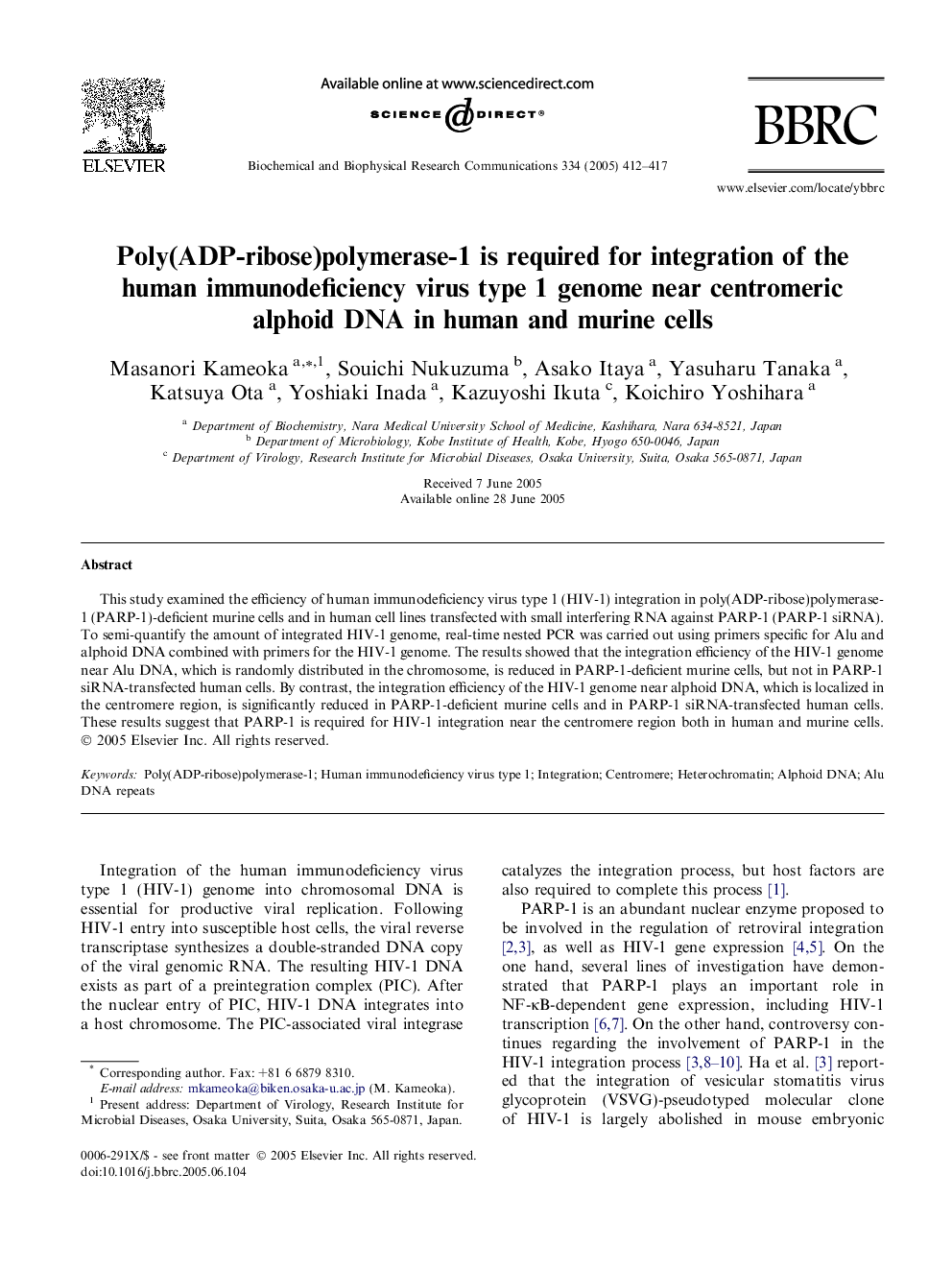| Article ID | Journal | Published Year | Pages | File Type |
|---|---|---|---|---|
| 10769188 | Biochemical and Biophysical Research Communications | 2005 | 6 Pages |
Abstract
This study examined the efficiency of human immunodeficiency virus type 1 (HIV-1) integration in poly(ADP-ribose)polymerase-1 (PARP-1)-deficient murine cells and in human cell lines transfected with small interfering RNA against PARP-1 (PARP-1 siRNA). To semi-quantify the amount of integrated HIV-1 genome, real-time nested PCR was carried out using primers specific for Alu and alphoid DNA combined with primers for the HIV-1 genome. The results showed that the integration efficiency of the HIV-1 genome near Alu DNA, which is randomly distributed in the chromosome, is reduced in PARP-1-deficient murine cells, but not in PARP-1 siRNA-transfected human cells. By contrast, the integration efficiency of the HIV-1 genome near alphoid DNA, which is localized in the centromere region, is significantly reduced in PARP-1-deficient murine cells and in PARP-1 siRNA-transfected human cells. These results suggest that PARP-1 is required for HIV-1 integration near the centromere region both in human and murine cells.
Keywords
Related Topics
Life Sciences
Biochemistry, Genetics and Molecular Biology
Biochemistry
Authors
Masanori Kameoka, Souichi Nukuzuma, Asako Itaya, Yasuharu Tanaka, Katsuya Ota, Yoshiaki Inada, Kazuyoshi Ikuta, Koichiro Yoshihara,
